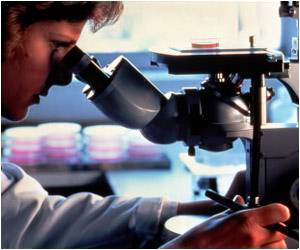- A research team Wellcome Trust Sanger Institute has identified the pathway that T cells choose in fighting malarial infection.
- Activation of the gene Galectin 1 has been found to increase the production of T cells
- The study identifies Galectin 1 as a potential target for drug therapy against malaria
Galectin 1
Single-cell genomics technology as well as computational modeling were used to ascertain which genes were involved in the production of T cells against a malarial infection. When the gene Galectin 1 was activated, it lead to the production of a specific type of T cells, highlighting the possible use of this gene as a target for drug therapy against malaria and other associated infections.T Cells and Immunity
The host defense against an infection is complex, with specialized T cells that form to fight against specific immune cells. There are two types of T cells that are generally formed to fight against infections and they include- T helper1 (Th1)
- T follicular helper (Tfh)
The co-lead author of the study, Dr Ashraful Haque, from the QIMR Berghofer Medical Research Institute, Brisbane, Australia, said that this is the first study to identify that activation of the Galectin 1 gene was shown to activate Th1 production. This further highlighted the potential use of the gene as a therapeutic target for malarial infection. There were other genes that were identified in the study and the scientists are keen on identifying if the activation of these genes could further enhance the immune response of the host against malarial infection.
Mechanism of Conversion
The molecules that are involved in the conversion of T cells into other forms are not well understood. In the current study, the scientists utilized single cell RNA sequencing which aided in obtaining insights into genes that were active in each T cell in mice with malaria. The various stages of the T cells, from immature T cells into Th1 or Tfh could be tracked using this method.The co-author of the study who is also the Head of The Cellular Genetics at the Sanger Institute, Dr. Sarah Teichmann said that these were the first high resolution images of cells that were being monitored over a period of time using a pathogen in mice. The latest advancements in genomics along with computational methods were utilized in the reconstruction of how the cells modify in response to malarial infection. The co-author stated further that the advancements in technology allowed better understanding of complex processes.
GPfates- Computational Modeling System
The research team devised GPfates, which is a new computational modeling system that allows scientists to visualize how cells communicate with each other. This tool utilized the spatio-temporal statistics to determine which genes were activated in the different T cell types.The activation of these genes are critical to the health of the individual, as it can produce two diverse effects; on the one hand it could aid in fighting the infection and on the other it could lead to tumor progression. The computational tool that was designed by the scientists involved in the study may be used by other scientific studies conducted to understand cellular pathways.
Regulation of T Cell Function by Galectin
Galectin has been known to regulate the function of the T cells, as detailed in the study published in the journal Immunological Reviews, titled “Galectin-3 regulates T-cell functions” by Dr. Hsu DK and colleagues from The Department of Dermatology, University of California, USA.The study found that in resting CD4+ and CD8+ T cells, Galectin-3 was absent but it could be induced by some of the mechanisms including
- viral trans activating factors
- T-cell receptor (TCR) ligation
- calcium ionophores
- lectin activity
- recognition of matrix glycans
- inhibition of apoptosis
- induction of cell growth
- regulation of TCR signal transduction
References:
- Galectin-3 regulates T-cell functions - (https://www.ncbi.nlm.nih.gov/pubmed/19594632)















